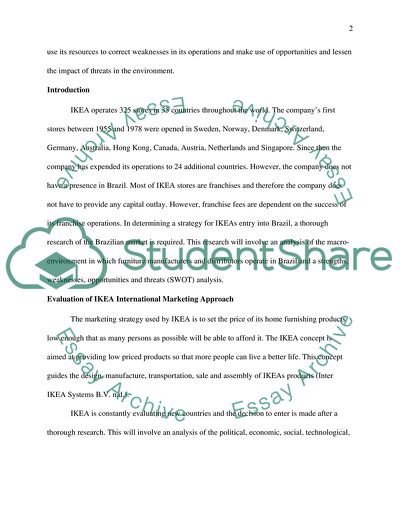Cite this document
(“Entry strategy of IKEA in to Brazil Essay Example | Topics and Well Written Essays - 1500 words”, n.d.)
Retrieved from https://studentshare.org/marketing/1583300-entry-strategy-of-ikea-in-to-brazil
Retrieved from https://studentshare.org/marketing/1583300-entry-strategy-of-ikea-in-to-brazil
(Entry Strategy of IKEA in to Brazil Essay Example | Topics and Well Written Essays - 1500 Words)
https://studentshare.org/marketing/1583300-entry-strategy-of-ikea-in-to-brazil.
https://studentshare.org/marketing/1583300-entry-strategy-of-ikea-in-to-brazil.
“Entry Strategy of IKEA in to Brazil Essay Example | Topics and Well Written Essays - 1500 Words”, n.d. https://studentshare.org/marketing/1583300-entry-strategy-of-ikea-in-to-brazil.


